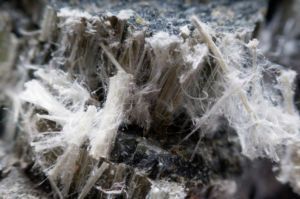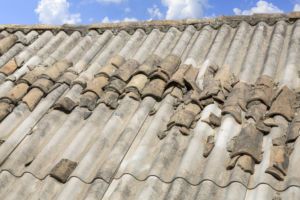
Studies showed that exposure to asbestos significantly increased risks of many cancers, including mesothelioma. Even brief exposure to asbestos was shown to carry potentially serious health risks. The wave of damning data resulted in bans on asbestos use in construction and subsequent strict regulations governing its handling and disposal.
Asbestos is generally considered not to pose significant health risks when it is intact. However deterioration over time, damage resulting from construction or demolition, or removal of materials containing asbestos can launch microscopic asbestos fibers into the air, where people can breathe it into their lungs.
What are the health risks?
Diseases such as mesothelioma, asbestosis and lung cancer are typically slow-developing, but ultimately fatal. Historically, most patients didn’t know they were exposed to a dangerous carcinogen, so they only sought medical treatment when they began to experience symptoms years later in advanced stages of their ailments. A subway worker exposed to asbestos insulation in tunnels for years develops a hacking cough around retirement, is subsequently diagnosed with mesothelioma and dies a year later.
Fortunately, research and awareness leading to early screening have resulted in better outcomes for patients exposed to asbestos. The key to successful treatment is early detection, so if you believe you may have been exposed to asbestos fibers, consult medical assistance for screening.
How can I tell if my home or business contains asbestos?
Asbestos is banned for most construction uses, but it can still be found in older structures and a number of products. Some places to suspect the presence of materials containing asbestos include:
- Buildings constructed before 1990.
- Textured paint, sheetrock, popcorn ceilings.
- Roofing and siding materials.
- Insulation, especially in older structures. Notably, Zonolite Attic Insulation containing vermiculite.
- Artificial fireplace fixtures and logs.
- Protective material on walls and floors near stoves and furnaces.
- Floor and wall tiles.
- Pipe coatings and insulations.
- Furnace door and pipe gaskets.

Aging building materials containing asbestos can be hazardous as they break down.
I have some of these. How do I tell if they contain asbestos?
With few exceptions, a visual inspection with the naked eye cannot identify asbestos. If you think you’re dealing with asbestos, first treat the material as if it is confirmed as asbestos. Don’t try to take samples or perform testing yourself. You run the risk of damaging and disturbing hazardous asbestos fibers, increasing your exposure to the dangerous material and that of your family or employees and customers. Enlist a professional asbestos testing expert who can safely and accurately verify the presence of asbestos.
If I have asbestos, what should I do?
In many cases, asbestos can be left in place, as long as it is in good repair and will not be disturbed. If asbestos-containing material is deteriorated or you plan to disturb or remove it, you should consult an asbestos testing and remediation professional. Be aware that state and federal laws regulate the removal and disposal of asbestos.*
Other options for asbestos mitigation include sealing or covering it. A binding agent can be applied to asbestos-containing materials, encapsulating the fibers and preventing them from being released. Covering asbestos-containing material with a protective material or sleeve can also prevent the release of dangerous fibers. Sealing or covering materials containing asbestos should only be performed by a properly trained and equipped professional.
If you plan to remove asbestos yourself, ensure that you use breathing protection that is rated to filter asbestos fibers and take precautions to isolate the work area and restrict the potential spread of asbestos fibers. Also check applicable regulations.*
Can I remove asbestos from my home myself?
Federal and state laws allow for homeowners to mitigate asbestos themselves as long as the home is not used for commercial purposes. Simply put, this is the law telling you, “It’s your business if you want to expose yourself and your family to dangerous asbestos, but the line is drawn at exposing others.”
If you have confirmed asbestos in your home, make sure you comply with applicable laws and regulations regarding the removal and disposal of asbestos before you begin any demolition or remodeling project.*
If you plan to do the work yourself, ensure that you use breathing protection that is rated to filter asbestos fibers and take precautions to isolate the work area and restrict the potential spread of asbestos fibers.
You can learn more about asbestos regulations in the “More info” section below.
Get asbestos facts, then get a professional
Abbotts professionals are trained and experienced at detecting and safely removing asbestos. If you think you may have asbestos in your home, get it tested and get the facts. If testing confirms the presence of asbestos, Abbotts asbestos remediation experts will help you protect your family or employees and customers from dangerous exposure, safely removing and disposing of the hazardous substance. Call us anytime, day or night, for peace of mind.
*IMPORTANT: San Diego’s EPA NESHAP Regulations 40 CFR 61 “requires an asbestos inspection prior to renovation or demolition regardless of construction
date.”
More info:
Got Asbestos? Here’s What to Expect
EPA list of asbestos laws and regulations
EPA suspected asbestos-containing materials





